Top 5 Edible & Medicinal Flowers to Grow This Spring
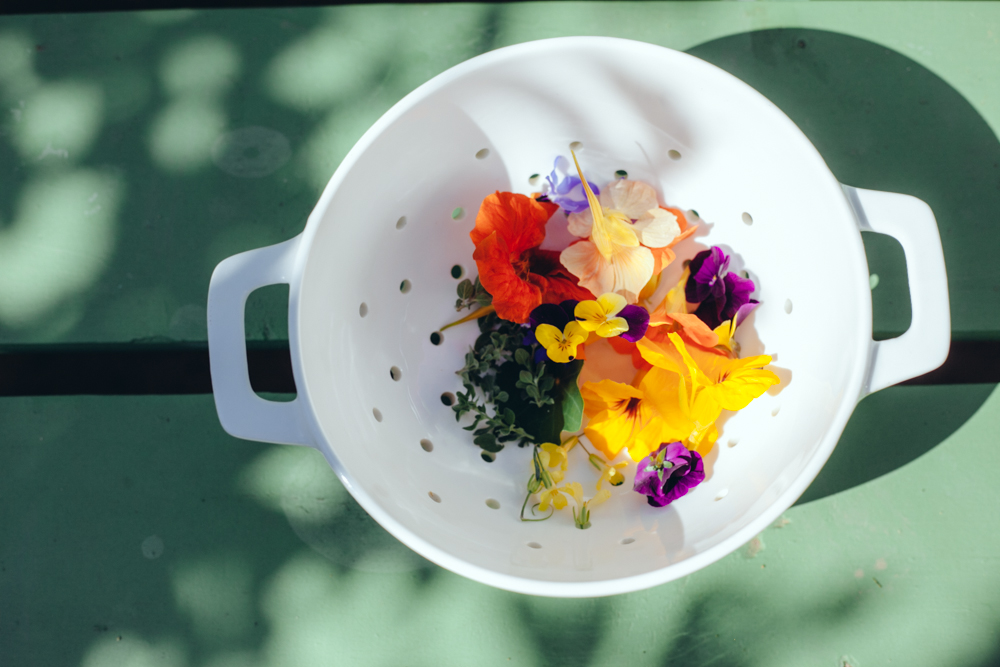
Spring is coming and @sagescrub and I are excitedly planning our garden! We're incredibly grateful to have a huge gardening space at the new place we've just moved to in Williams, Oregon. Of course we have many, many veggies in mind, but one of the things I'm most excited about is flowers.
I used to think flowers were mostly decorative until I began working on farms that focused on diversity. At these places, flowers were grown for many purposes, including food, medicine, dyes, decorative (cut/drying), pest control, and attracting pollinators and beneficial insects. And as I began to recognize and learn the name of these flowers, I grew more and more fond of them. I began compiling several lists of flowers that I hope to grow in our own garden. Below are some of my favorite flowers that have multiple functions.
1. Daylily.
This is at the top of my list of favorite edible flowers because it is beautiful, delicious, and a hardy perennial that can withstand -20C. I learned about daylily at Terraflora, a permaculture homestead in east Washington.
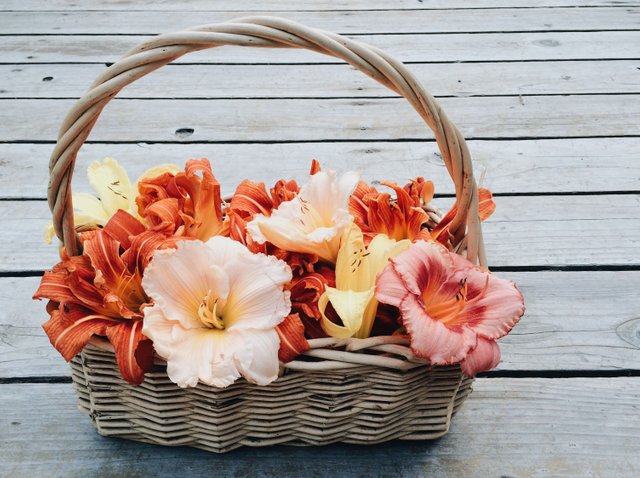
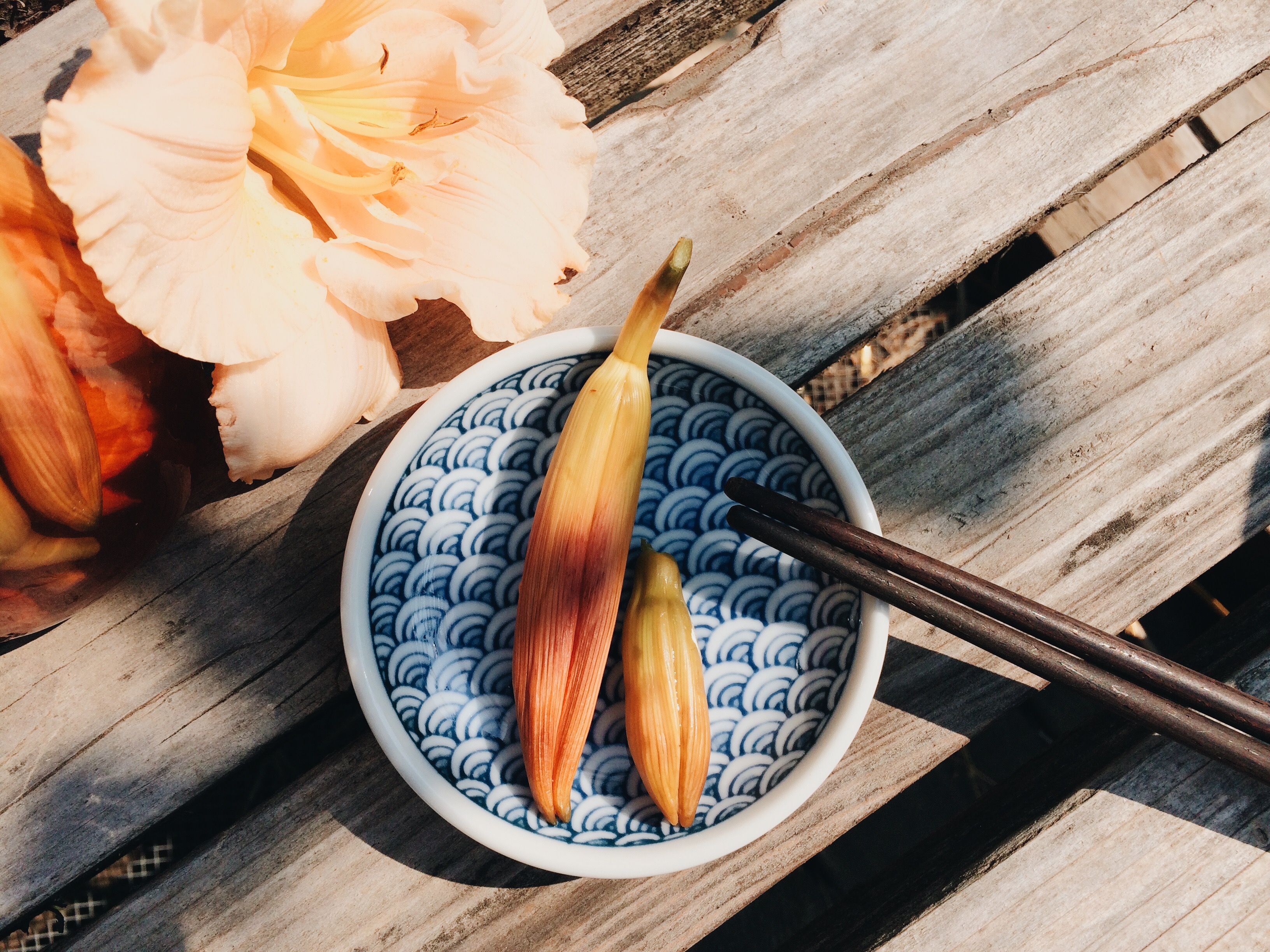
The young buds taste very similar to asparagus. I'm really into pickling, so an idea came to mind to make dilly daylily. I tried it and it became a quick favorite! It held up nicely in brine with a gentle crunch and sweet, salty, sour flavors. We also ate the flowers raw in salads. I later found out that daylily is one of the key ingredients of Chinese hot and sour soup. According to Edible Perennials, the juice of the roots of Hermerocallis middendorffii is an effective antidote to arsenic poisoning!
2. Violet.
I'm not sure where the phrase "shrinking violet" comes from; a violet may look fragile, but it is extremely resilient. It's the only flower I've seen growing in snow right through winter. The last time we looked in our low tunnel, they were still blooming in January.
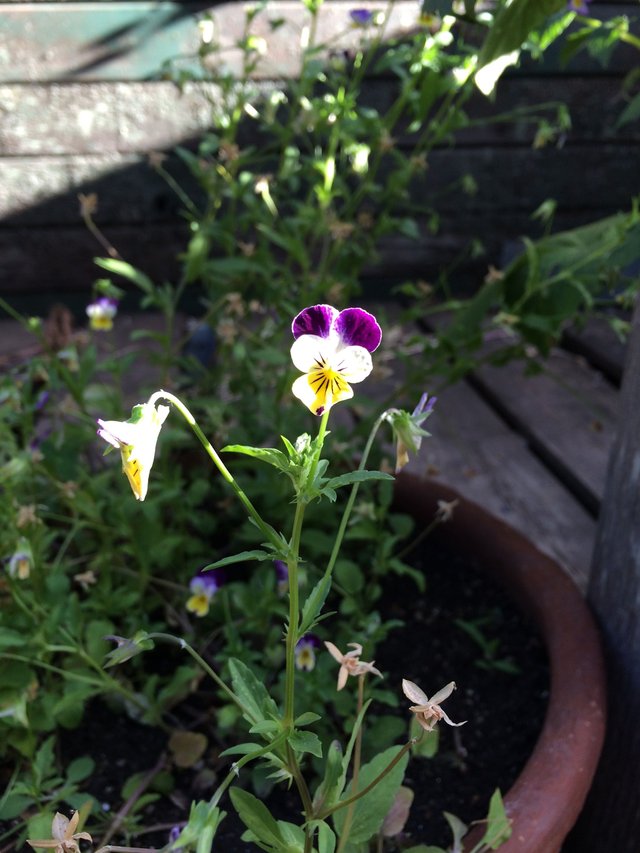
Aside from being a kickass hardy perennial, violet is also edible and medicinal. Some of their edible uses include flavoring salads, desserts, and teas. It contains salicylic acid and can be used for treating headaches and insomnia. It's also used to treat lung problems like coughs and asthma. Susun Weed has an entire chapter dedicated to "Aunt Violet" in her book Healing Wise if you are interested in learning more of its medicinal qualities.
3. Calendula.
This cheerful orange flower hits a lot of points for me: edible, medicinal, and a dye.

Though it is not a perennial plant, it reseeds extremely easily. Throw a few seeds into your garden, and you'll soon find them coming back year after year. They also bloom for a very long time, from spring all the way through fall. I learned about calendula at Camp Joy Gardens, where we dry them for teas and salve, and have since collected envelopes of seeds for our garden. I also use the fresh petals in salads and to decorate baked goods.
Calendula is well known for its antibacterial, antiviral and anti-inflammatory properties, and thus is often used topically (usually as salves/ointments) for minor injuries. Check out this study on calendula to learn more about its medicinal values.
4. Nasturtium.
Why I love this flower: not only is it edible and medicinal, it's also a useful pest control. They're a good "sacrificial" plant to have in the garden because insects (especially aphids) tend to love them and so they'll likely go for nasturtiums instead of your veggies. If you plant nasturtiums in combination with sunflowers, lavender, echinacea, and cilantro, you'll also attract the beneficial insects that feed on the pests and further protect your food crops.
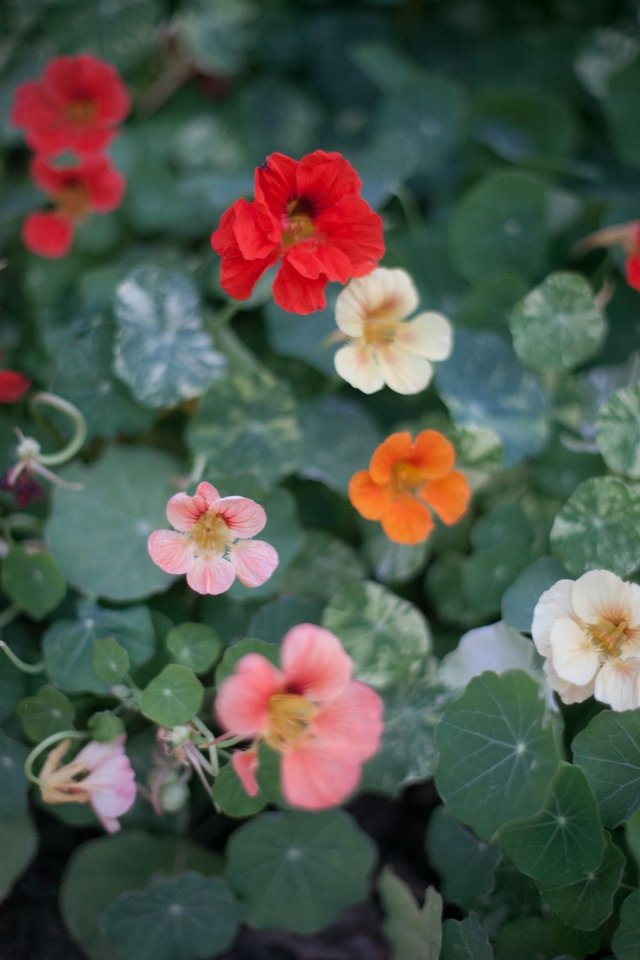
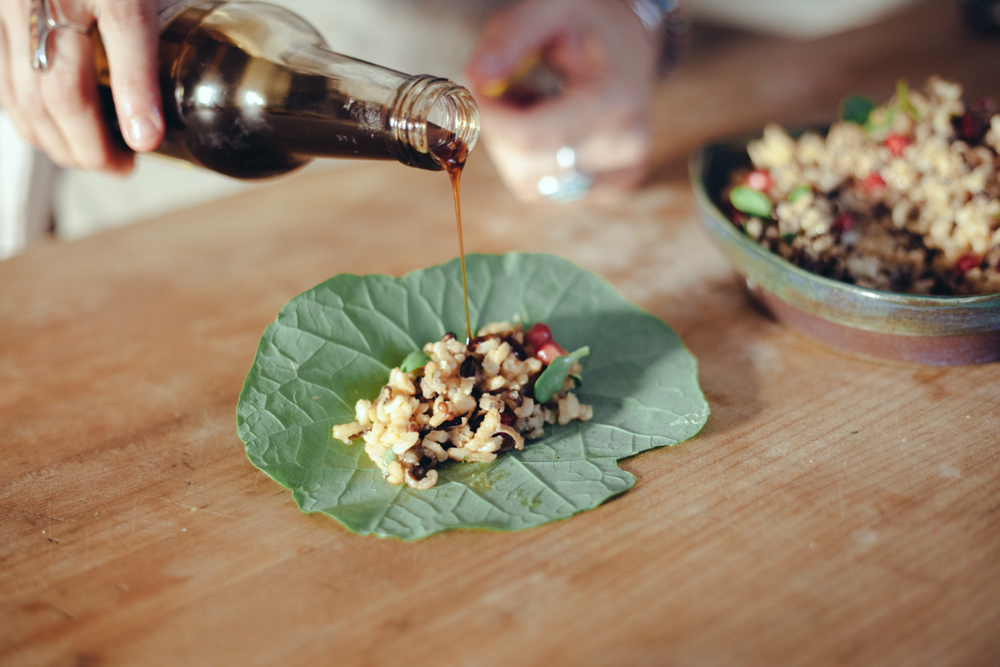
Not only are nasturtium flowers edible, but also their leaves. When my dear friend and talented chef, Kerri, used nasturtium leaves to make dolmas, my mind was completely blown. Kerri pointed out to me that nasturtium's round, mild-tasting leaves make them easy to use for wraps. It was such an aha moment.
5. Borage.
Aka the bee plant, does exactly as it's named, attract bees! Have you ever stood near a borage plant? You'll know it right away from the sound of the buzzing bees. Borage is also one of my favorite edible flowers because its blue, star-like blossom is such an impressive garnish to any dish.
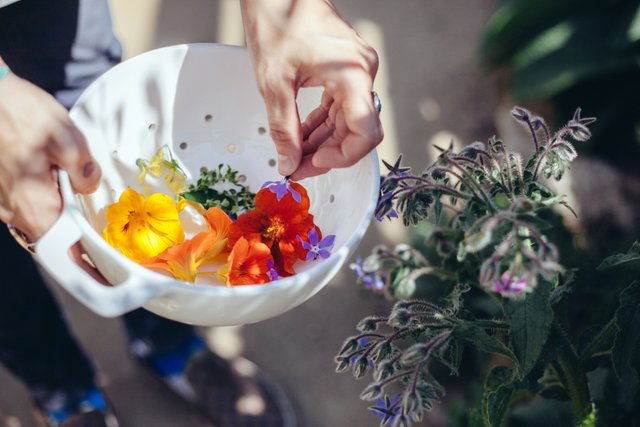
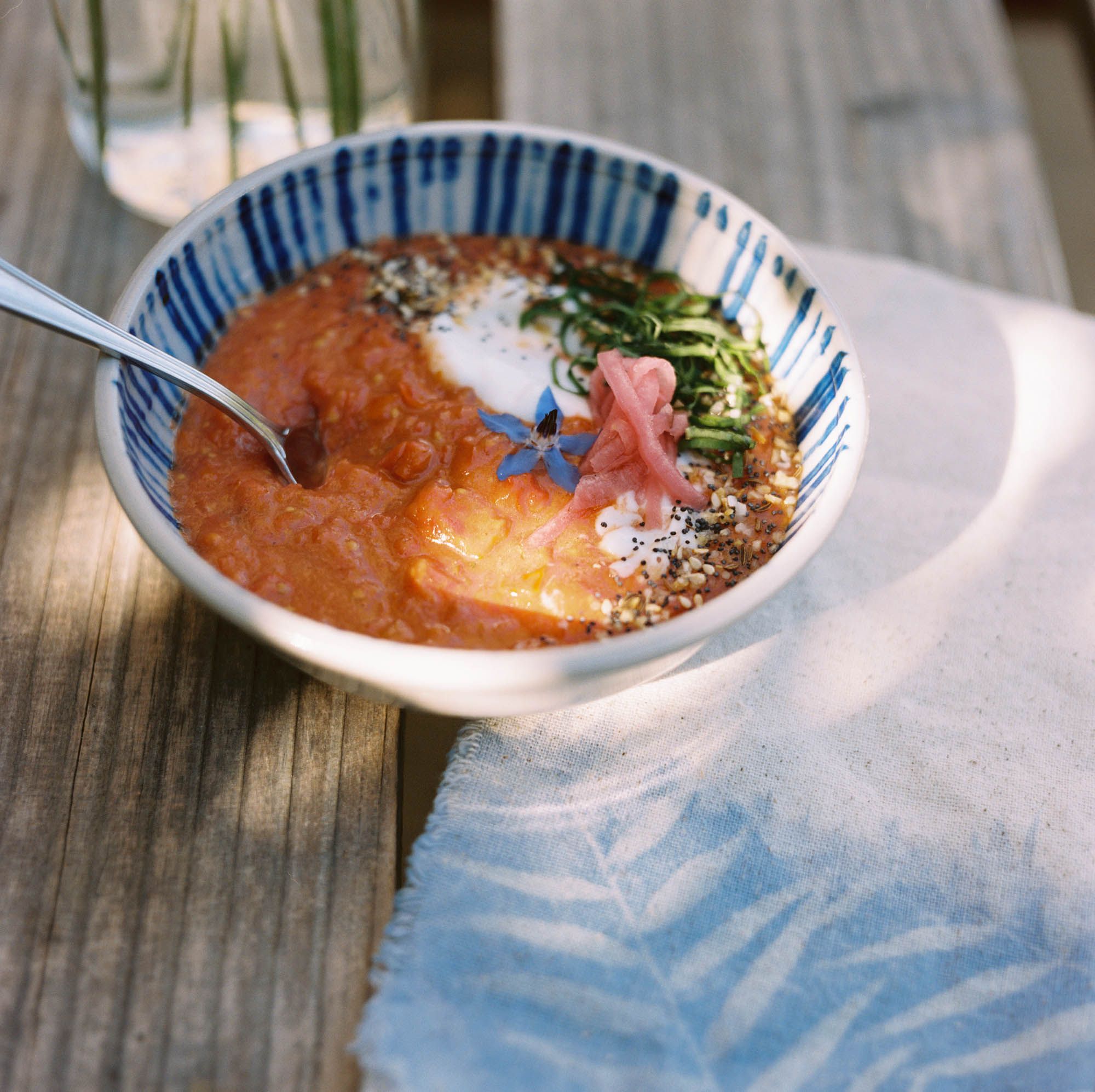
But wait, there's more! Borage is also medicinal. It's used for stimulating milk production and as an adrenal gland tonic. And then there's its usefulness as a pest control - borage is an excellent companion plant, especially for tomatoes, as it confuses hornworms. It also reseeds easily, flowers for a long time, and is fast growing, with lots of foliage, making it ideal as compost.
The more I learn about plants, the more awe I feel for nature and its seemingly endless creativity and diversity. What's even more exciting is that there's sooo many more wonderful plants I've yet to discover and I'm glad to know it's going to be a life long discovery.
So what are you look forward to planting this spring?
Hello @idyllwild, I came by via foodphotography - this is a brilliant post!! I also post foodphotography every so often, it's a great way to find such good post like yours sometimes. Upvoted and Following you. I'll be looking forward to seeing more : )
Hi Anna-bella! Glad you found me and thank you for upvoting and following! I followed you back. Life and photos of Europe? What's not to love!
Thanks @idyllwild! Look forward to sharing lots of stories and photos each other. (wow 229 votes so far, well done!!) ps. resteemed ;)
World of Photography Beta V1.0
>Learn more here<
You have earned 5.05 XP for sharing your photo!
Daily photos: 1/2
Daily comments: 0/5
Multiplier: 1.01
Server time: 06:33:47
Total XP: 20.25/100.00
Total Photos: 4
Total comments: 0
Total contest wins: 0
Follow: @photocontests
Join the Discord channel: click!
Play and win SBD: @fairlotto
Daily Steem Statistics: @dailysteemreport
Learn how to program Steem-Python applications: @steempytutorials
Developed and sponsored by: @juliank
Alright, so I found myself saying whaaaat!? out loud and several times while reading this post. I am kind of hoping you do a follow up post on pickling Daylily. I always adored the daylilies while working at the greenhouse but never did I imagine they were edible! I am fascinated with using plants as medicine and eager to learn more.How, how, how? I am wondering! I think I will be doing a lot more reading in the near future. Thanks for this awesome post! -Aimee
Haha I love your enthusiasm and energy. I will post more about pickling daylily for sure...probably later in the summer when we harvest them :). It's quite easy...I pretty much used a brine that I normally make for dilly beans and substituted daylily for green beans. Medicinal plants is a fascinating world too. I will share more as I continue to learn!
Looking forward to seeing the garden alive with color when your flower seeds start to bloom :)
Looking forward to tending and nurturing our garden together :)!
I had never really thought about eating flowers, but yet I sat here reading your post and becoming more interested as I went. I loved the little tidbits about the different medicinal purposes for them. Your photos are also incredible. Together it made for an outstanding post! thanks for sharing it. Look forward to more from you.
Thank you so much for reading and commenting. I'm happy to hear my post about edible flowers intrigued you! If you feel so inclined, maybe you'll taste a flower in your next wandering :).
Wow!I didn’t knew all this about this flowers!I will never look at them just as Flowers,they are pure health!Thanks for this post!😊
You're welcome and thanks for stopping by. I think flowers are amazing and yes pure health too!
wow... never know that there are so many edible things that look beautiful
Haha, right? Beautiful and beneficial!
great pictures and info. thanks
Thanks so much for stopping by and reading :).
What an intense JOY to read. So very beautiful! And inspiring. All dynamic vegetable growers ought to grow plenty of the flowers you mention, for a harmonious vibe and to attract bees! You've included all my favorites. Stunned to learn the hemerocallis is edible. Also amazed by your (Oregon) calendula. It's colour and leaf is so different to the European calendula - only, now I think about it, it's probably poking through something else, right?! (and many varieties exist for the marigold). I dot this orange right around my garden: it soothes the pollution-bruise marring our city air!


 |
|  |
|
The borage star is magical in its radiant sky-cobalt blue. (As an oil it's medicinal properities also shine! Both externally and internally applied.)
I let my nasturtiums go wild until the frost cuts them down.
I hope to be sowing some sweet-pea, lathyrus, my favorites, but I seldom have much success (soil needs to be very well fertilised) (not edible for us, but for the bees).
The antirrhinums (snap dragons) I sowed late summer already, and they have survived in the greenhouse, so far. Also putting variegated foxgloves in the front where everything has to improvise amongst old tree roots, rubble and too much sand
Must not forget cosmea for some hot pink.
Wow! Thank you so much for stopping by, sharing your thoughtful comment and beautiful pics of your garden flowers, and reesteeming my post :).
Ah yes, the calendula picture was probably a little confusing as the leaves the flower is poking through are artichokes...haha. I can see why you thought, gosh what strange variety is this? Haha. This particular one is just your standard garden variety calendula :). I do have seeds for a gorgeous calendula that had petals fading from pale apricot to deep orange in its center that I can't wait to plant them. I'd love to get my hands on the crimson petaled ones too.
Thanks for the reminder about borage's use as an oil. Gotta love that little blue flower plant!
That's good to know you can propagate snaps in late summer and let them overwinter in the greenhouse.
Sweet peas are wonderful!!! I've grown very fond of them too. Your picture of the wild pink sweet pea reminds me of seeing them in the Edible Perennial book. The book claims the roots are edible, and roasted, tastes like chestnuts! Isn't that amazing? I can't wait to dig some up and try them.
Makes me so happy to see so many flowers in your comment! Thank you for sharing your photos and your garden know-how!
Never heard about sweet-peas having edible roots. Which Edible Perennial book have you got (there are several out there)?
This is the book I was reading from: https://www.amazon.com/Edible-Perennials-perennials-plants-future/dp/1516965345 and there's an online version of the part about the sweet pea here: https://www.pfaf.org/user/Plant.aspx?LatinName=Lathyrus+tuberosus.
That's the book I was hoping you had (since it was on my wishlist to get!). Good to read about the caution to.
(In the meantime, I see you suddenly made it big, with this post! Well, done!)
I was shocked to see this post go up so much! Not sure how... I'm still pretty new to this. I'm very grateful and it certainly made my day!
I'm also trying to figure out how...it happened shortly after my resteem: I got hit last weekend....some kind of link? Curious little world here. I like how you widen it up so much with your blogs. Loved your other posts too, (just found them- wish we could back-vote!) Great introduction promising much more from you. I shall be looking forward to whatever you write. I hope the fame hasn't gone to your head! (not likely from what I have read!).
Congratulations @idyllwild!
Your post was mentioned in the Steemit Hit Parade for newcomers in the following category:
I also upvoted your post to increase its reward
If you like my work to promote newcomers and give them more visibility on Steemit, feel free to vote for my witness! You can do it here or use SteemConnect
Hooray! Thank you thank you thank you!